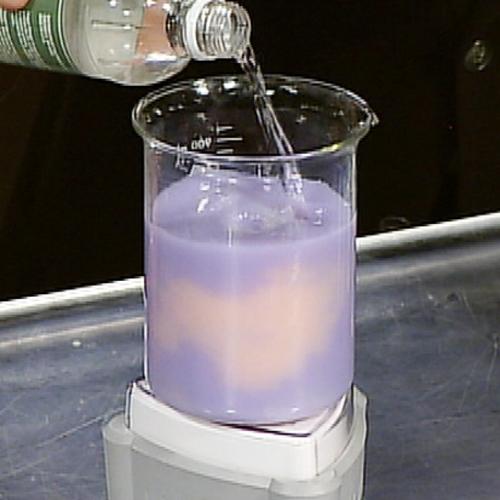Berry pH Paper
You no longer need to search for specialty litmus paper. Steve and his team have come up with a formula that will allow you to […]

Sometimes great food and heartburn go hand in hand. Many people rely on products like Milk of Magnesia to settle their stomachs, but have you ever wondered how those antacids really work? This highly visual demonstration uses some cool color changing chemistry to show you exactly how Milk of Magnesia neutralizes the acids in your stomach and saves the day after a great meal.
Milk of magnesia is a liquid used as an antacid and, sometimes, a laxative. Also known as magnesium hydroxide or Mg(OH)2, the solution is taken orally. The original concentrated formula was concocted by a man named Charles Henry Phillips in 1880 and sold under the brand Phillips’ Milk of Magnesia. Today, the rights to the name “milk of magnesia” appear to be owned by Bayer Corporation and, interestingly, “Phillips’ Milk of Magnesia” is owned by Sterling Drug.
Milk of magnesia is an alkaline suspension, meaning that it undergoes a neutralizing reaction when encountering anything acidic. This makes it an effective combatant of excess stomach acid when taken internally. Too much hydrochloric acid (HCl) excreted by the parietal cells in the stomach can lead to indigestion, heartburn, and stomach ulcers. Milk of magnesia in the form of an antacid is dosed from 500 mg-1500 mg (0.02-0.05 oz) and readily enters the stomach, where the hydroxide ions in milk of magnesia combine with the hydrogen ions in HCl to calm overactivity in the stomach.